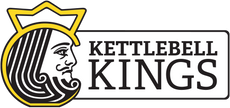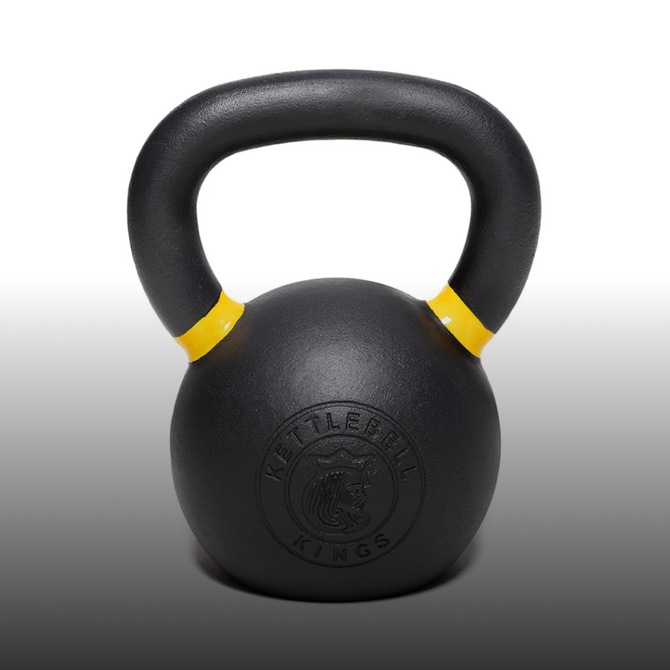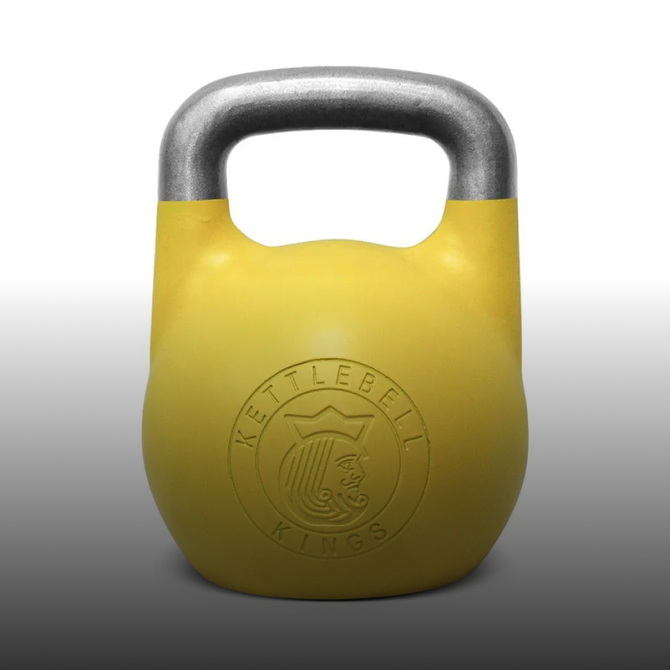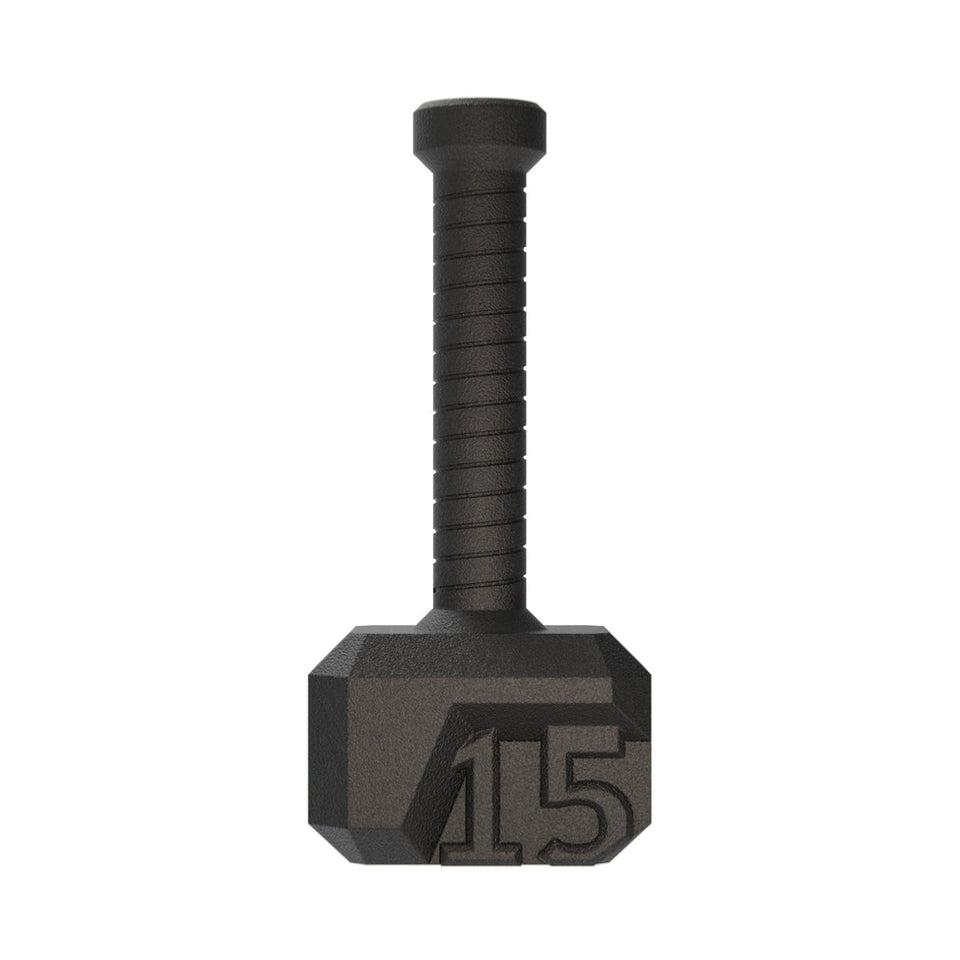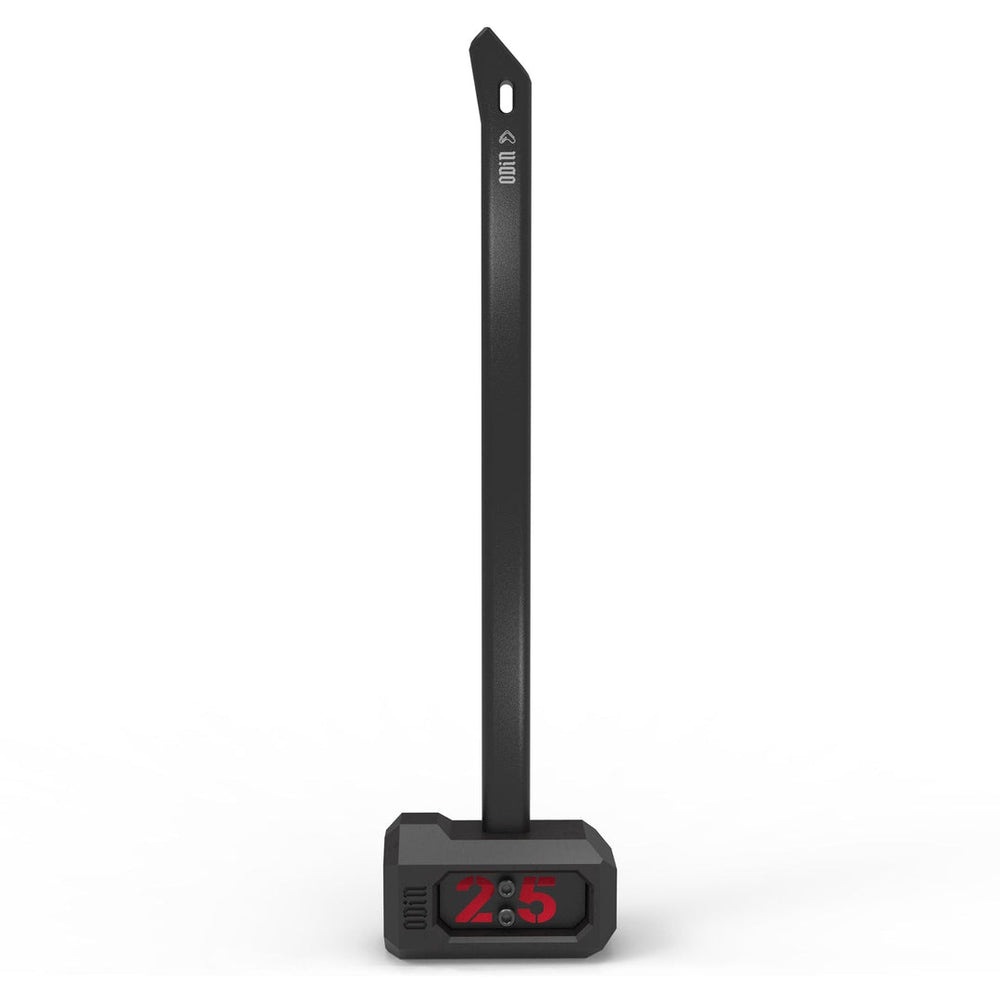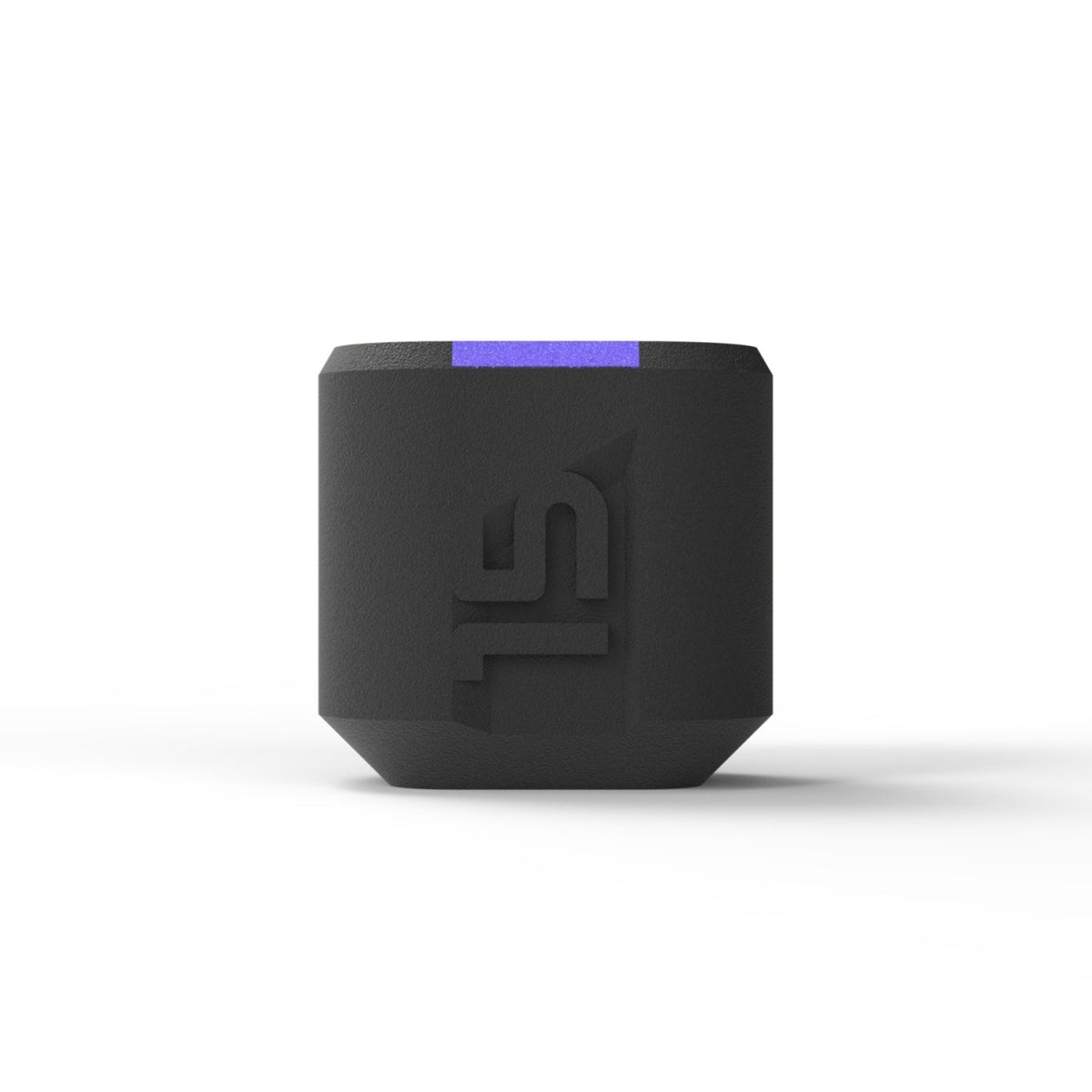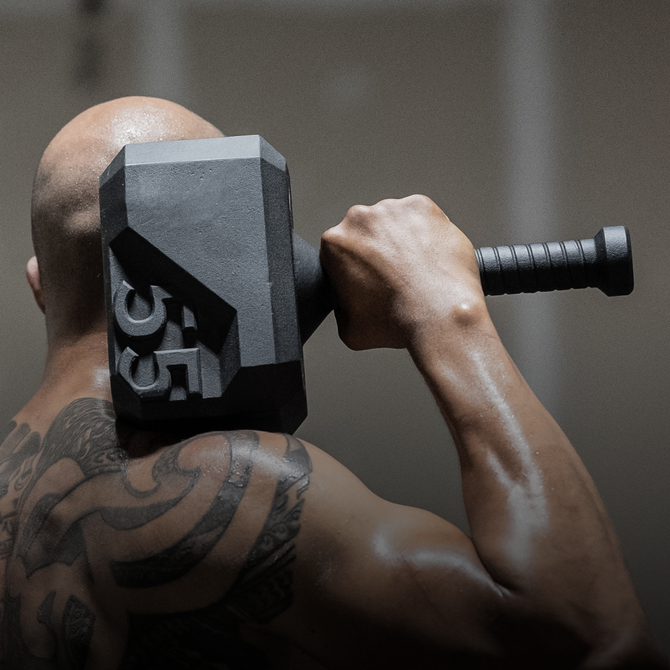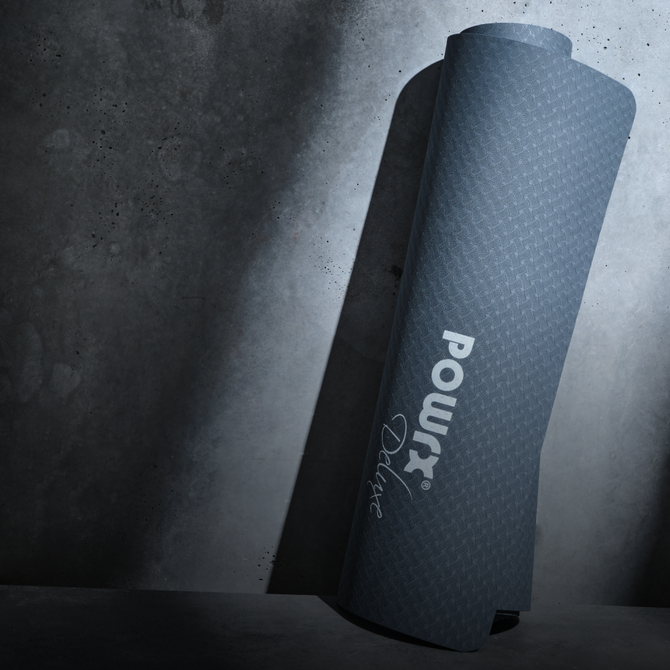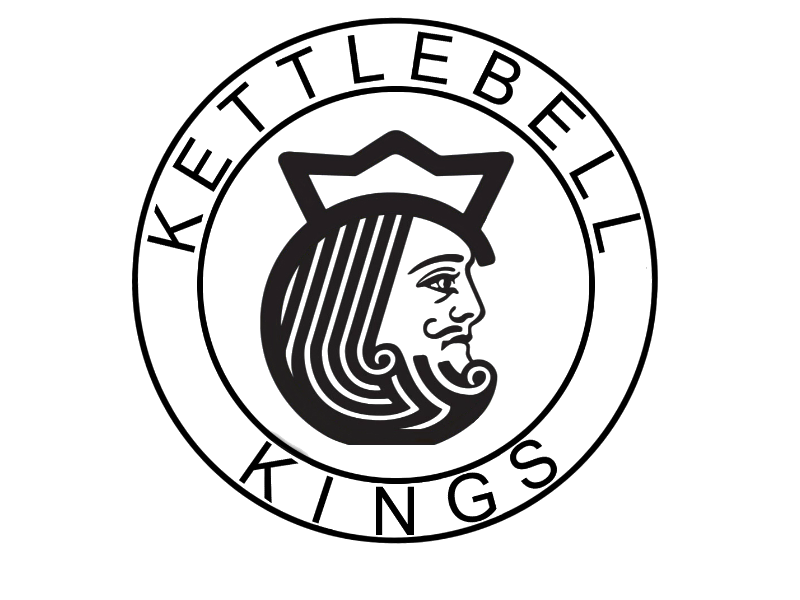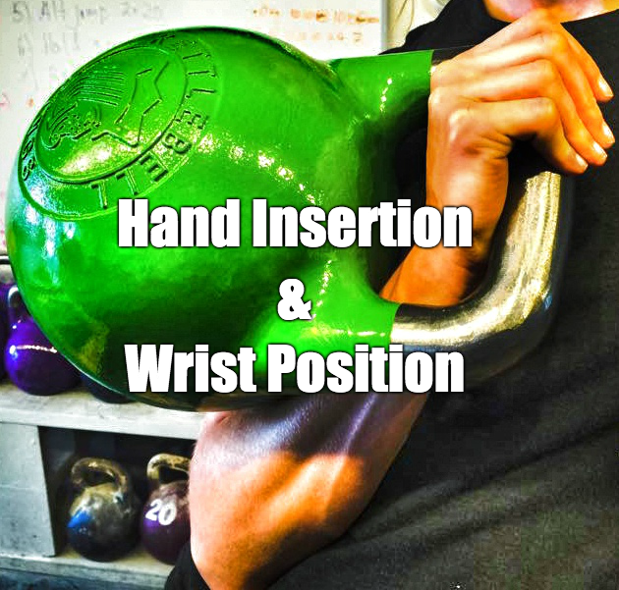Kettlebell Kings partners with kettlebell and fitness experts to create helpful and informative posts designed to maximize your kettlebell experience. Tim Peterson, Chief Instructor for FitRanX, has created a great post for us about selecting your kettlebell. Specifically, the difference between traditional cast iron kettlebells and competition style kettlebells and what lifts work best with different types. Although kettlebells are fairly mainstream workout equipment now, most lifters are stilll unfamiliar with competition style kettlebells. So, should you consider one? Read below!
By Tim Peterson:
There is an oft used phrase, that you always want to use the “right tool for the job.” This phrase could not be more true in the world of strength and conditioning. Kettlebells are a great tool, that can be used for strength work, hypertrophy, conditioning, power, and endurance. But there are many different kinds of kettlebells, so how do you choose?
Types of Kettlebells
Cast iron, competition/sport, steel, rubber coated, soft-sand filled, adjustable, medicine ball-like, and more. In addition, you can find them in pounds or kilograms, further adding to the choices. All kettlebells are cast in a mold, what happens after can be different depending on the company. Do your due diligence, as all kettlebells are not made equal.
Kettlebell Kings has different types of kettlebells and is known for quality!
After you read about which type of kettlebell you need, we have a great post about determining which weight you need to train with HERE. If you already know you can view the bells through the link above!
I will be focusing on the two most common, the cast-iron, and competition/sport style kettlebell. These can both be found in both pound and kilogram weights. Personally, I use both, for different uses. Each style has its own strengths and weaknesses, and I will address each.
Cast iron kettlebells are widely regarded as the “original” kettlebells, with histories going back centuries. Depending on who you ask, you will get different folk stories of what they originally were made from, and what they were used for, as well as which countries claim ownership.
Cast iron kettlebells are made out of molten iron, and range widely in size, depending on weight. They have a curved handle, that can also vary widely in width as well as diameter. The cast-iron kettlebell is solid, with no hollow space.
Competition kettlebells get their name from the fact that they are used in Girevoy Sport, also known as GS or Kettlebell Sport. GS focuses on two lifts, the Clean & Jerk and Snatch.
The competition kettlebell is the same size and dimension across the weight range, and is made out of steel. The handle is flat across on top, and joins the body of the kettlebell vertically. These are made a couple of different ways. Some brands are an 8 kilogram shell filled with fillers like sawdust and ball bearings to achieve the desired weights, this potentially can become loose and rattle over time or lose balance. More durable competition bells are made from a single piece of steel, cast precisely to the specific weight. You can identify these because they will have an opening in the bottom which you can look into and actually see the thickness of the steel mold.
There are 6 most common kettlebell lifts. There are ballistics such as Swings, Cleans and Snatches, and grinds, such as Goblet and Double Front Squats, Presses, and Get-Ups. There are many other kettlebell lifts and variations, however I will focus on these six.
Different Kettlebells For Different Lifts
When teaching a beginner, the kettlebell and its lifts can be scary and intimidating. For this reason, it may be better to start with a cast-iron 8kg kettlebell rather than a competition 8kg kettlebell, as the cast-iron 8kg is tiny by comparison. There is a benefit to using kilograms rather than pounds as well. Mentally, since “8” is less than “18,” the 8kg kettlebell will feel easier to lift than an 18lb kettlebell.
- Swings, When teaching two hand swings, it can be a toss-up as to which style kettlebell to use. On one hand, the curved handle of a cast-iron kettlebell is easier to hold than the flat-handled competition kettlebell, however, since the handle’s vary in size depending on the weight of the cast-iron kettlebell, the lighter weight kettlebell’s have very narrow handles which are difficult to hold with two hands. Once beyond the learning phase, the curved handle of the cast-iron kettlebell is the clear winner for swings.
- Goblet Squats, The curved handle of a cast-iron kettlebell is also preferred when performing Goblet Squats. Since the handle remains the same diameter all the way to the body of the kettlebell, the hand can get a firm grip on the handle, while the curve of the handle allows the wrist to stay more in line with the forearm.
- Cleans, When performing double cleans, (or double swings or double snatches) an interesting thing can happen when using very light competition style weights. Since the kettlebell is hollow, the walls of the kettlebell must be thin. As a result, if the kettlebell’s contact each other on the way up or down they will have a tendency to bounce off of each other like basketballs. As they get heavier this happens less and less, but it must be addressed with beginners or anyone using lighter weights. The last thing you want is for the kettlebells to bounce away from each other on the way down and hit the user on the legs. Another item to consider is that when hiking two large kettlebell’s through the legs, regardless of weight, the stance used needs to be wide enough to allow room for them to pass.
Kettlebell Kings has different types of kettlebells and is known for quality!
After you read about which type of kettlebell you need, we have a great post about determining which weight you need to train with HERE. If you already know you can view the bells through the link above!
Having said all of that, competition style kettlebells are the kettlebell to choose when doing anything that puts the body of the kettlebell against the forearm. Whether it be a lift that puts the kettlebell in the rack position (cleans, presses, front squats) or simply contacts the forearm (get-ups, snatches), the consistent size of a competition kettlebell puts the kettlebell in the same position every time. More importantly, and again something that affects beginners more than experienced lifters, is that the larger size body rests on the meat of the forearm rather than the bone protrusion of the wrist, which is right where the smaller body of a lighter kettlebell will sit. The tiny body of a 4kg kettlebell will hit the back of the hand, while an 8kg kettlebell will hit right on the back of the wrist. Even a 12kg or 16kg kettlebell will hit a male on the wrist bones.

Pictured:
Left Side, Competition Style Kettlebell colored to International Standards
Right Side, Traditional Cast Iron Style Kettlebell

I can hear the nay-sayers now – “No pain, no gain,” or “Suck it up buttercup!” Well, I have personal experience here. I broke one of my wrists mountain biking years ago, and now have a plate and 8 screws holding the end of my ulna together. On the other wrist, I had surgery to remove a benign lump of tissue. Both of these surgeries led me to experiment with competition style kettlebells, which contacted my arm below these sensitive areas. At our Instructor Certifications, we frequently have inexperienced kettlebell users complaining of wrist discomfort, and swapping out the cast-iron kettlebell for a competition kettlebell not only eliminates that problem, but also makes it easier to teach movements like the clean and snatch due to the consistent distance from the handle to the center of gravity of the kettlebell.
Kettlebell Kings has different types of kettlebells and is known for quality!
After you read about which type of kettlebell you need, we have a great post about determining which weight you need to train with HERE. If you already know you can view the bells through the link above!
If you are an individual, I would recommend looking at what weights do you use for which lifts. Then, identify which style kettlebell is the best use for each of those lifts, and build your collection accordingly. If you are a gym, I would strongly recommend a full set of both cast-iron and competition style kettlebells. Yes that is a pricey proposition, but again, you want to use the right tool for the job.
To view the different kettlebells mentioned in this post, you can read more about Cast Iron Kettlebells and Competition Kettlebells on our product pages.
What Is Next?
After you read about which type of kettlebell you need, we have a great post about determining which weight you need to train with HERE. If you already know you can view the bells through the link above!
If this is your first time reading one of our posts, we create kettlebell workouts in collaboration with kettlebell experts designed to give you maximal results and not take up much of your time. We send these to your in box automatically every week! We recommend you read more about receiving a quick, free, dynamic kettlebell workout every week you can click below.
Also, we recommend you subscribe to our posts so you can be notified when we publish more in this series. Additionally, you can be notified when we publish new articles about specific kettlebell movements or techniques as well as niche pieces like this designed for specific training. You can do that through the sign up form at the bottom of this post.
About Tim:
Tim Peterson is the Chief Instructor and Director of Content and Curriculum for FitRanX, a revolutionary fitness ranking system based on standardized strength and conditioning tests utilized currently in over 1,000 gyms worldwide in more than 25 countries. He is a USA Weightlifting coach as well as a former RKC. Tim has a MS and BA in Kinesiology, and has taught High School Weightlifting for over a decade. He uses his experiences in and observations of the fitness industry as inspiration for his writing, which appears on the FitRanX website, as well as guest posts for Dan John, Kettlebell Kings, and others. For more of Tim’s writing as well as more information about FitRanX, a unique challenge that is both standardized yet personal due to tests based upon gender, age, as well as bodyweight, visit www.fitranx.com.
Kettlebell Kings creates new workout each week which you can receive in your email inbox. We incorporate kettlebell movements like all of those mentioned here. The workouts are designed to keep your workouts exciting and challenging. You can subscribe to them below. Additionally, if you want to be notified any time we make a new post, you can subscribe to our blog below.
Let us know how we can help.
855-7KETTLE
Kettlebell Kings has the most highly & frequently reviewed kettlebells in the world. We have free shipping in the US & Canada (www.kettlebellkings.com), Europe (www.kettlebellkings.eu) and Australia (www.kettlebellkings.com.au). Check out our 4,000 reviews for quality and customer service here!
